warspite1
Posts: 41353
Joined: 2/2/2008
From: England
Status: offline

|
....Finally a revised ASW counter
[4698 ASW Escort - by Robert Jenkins]
.P The date on the back of these ASW and ASW Carrier counters do not relate in
any meaningful way to actual build dates for the ships that took undertook the
convoy escort role during World War II. The counter date should therefore be
ignored. In addition, the counter mix is probably unbalanced in terms of origin
of the escorts and those with an aircraft component. As a result there will be a
degree of Royal Navy (RN) ship write up on Canadian counters and non-carrier
units being described on ASW Carrier counters.
.P These counters do not represent an individual convoy or any specific ships
but are designed to represent convoy escort groups. These counters have mixed
values reflecting the fact that the make-up of an escort group could differ from
one convoy to the next. Additionally, they show that as the war progressed, the
escorts allocated to convoys grew, not only in number, but also in anti-aircraft
(AA) and anti-submarine (ASW) capability. This was due to the great ship building
programs particularly in the US, Britain and Canada that churned out substantial
volumes of specialised escort vessels.
.P There were three main threats to convoys - Surface raiders, U-boats and
aircraft.
.B
.B Surface Raiders
.P See individual unit counters for details of action against convoys.
.B
.B U-boats
.P Unrestricted submarine warfare by the Germans in the First World War brought
the United Kingdom to the brink of defeat. The UK survived thanks largely to the
introduction of the convoy system that provided the previously unguarded and
mostly unarmed merchant vessels with warship protection.
.P At the outbreak of World War II, convoys were re-introduced as quickly as
possible but there had been a lack of investment in time and resources devoted
to the subject of convoy defence during the inter-war years and there were
initially insufficient escorts for the task. The RN therefore had to use
precious fleet destroyers that were badly needed elsewhere, and after losses
incurred during evacuations off Norway and France, this problem became critical.
Fortunately for the British, the Kriegsmarine were equally, if not more
unprepared and actually started the war with only fifty-seven U-boats, of which
just twenty-six were capable of Atlantic operations. This situation did not last
long as under the then Komodore Karl Donitz - head of the U-boat arm - a large
scale U-boat build program was instigated.
.B
.B Aircraft
.P During the Second World War, the potency of aircraft as ship killers became
evident. Most convoy routes came under threat from air attack at some point
along their length. To reach out into the Atlantic and Arctic, the Germans
employed their long range Focke-Wulf FW200 Condor aircraft that had a range of
2,212 miles (3,560km) and a 14-hour endurance. For more confined waters like the
North Sea, the English Channel and the Mediterranean, the Axis forces were able
to employ their shorter range aircraft in the ship killer role, and these were
used with deadly effect - particularly in the Mediterranean.
.P Countering these three threats was paramount - particularly across the trade
routes leading to the UK. The Battle of the Atlantic was to be the longest
battle in World War II. Had the Allies lost, the import to the United Kingdom
both of raw materials for the war effort and food for the population would have
been severely restricted and the United Kingdom could have been literally
starved into defeat. In addition, the movement of troops from the United States
and the far flung colonies and dominions of the Commonwealth to the frontline -
France, India, North Africa etc would have been much more hazardous. It is worth
remembering here that the men of the merchant navy suffered a higher percentage
of losses compared to the British Army, RN or Royal Air Force in World War II.
.P The write-ups for these counters gives information on the main types of
vessel that were available to the RN and the dominions. This write up looks at
armed merchant cruisers and highlights two examples, HMS Rawalpindi and HMS
Jervis Bay.
.P Armed merchant cruisers (AMC`s) were used by the RN and her dominion allies
to add to the defence of convoys and for patrol duty in the early years of the
war. These ships were identified as being suitable for such a role pre-war and
upon the outbreak of war or just before, were so converted. They were mostly
civilian liners in their previous role, that were fitted with between four and
eight 6-inch guns and typically three 3-inch AA guns. Fifty-seven such vessels
were converted for use as AMC`s and a total of fifteen were lost to enemy
action. From 1941 onwards, the majority of those remaining were converted to
troop ships as new specialist escorts were being completed.
.B
.B Name: HMS Rawalpindi
.B Engine(s) Output: 13,000 hp
.B Top Speed: 17 knots
.B Main Armament: 8 x 6-inch (152mm), 2 x 3-inch (76.2mm) guns
.B Displacement (full load): 16,697 tons
.B Thickest Armour: N/a
.P The Rawalpindi was a passenger liner for the P&O shipping company, built in
1925. She was converted into an AMC and commissioned into the RN in August 1939,
just before the outbreak of war.
.P After conversion and under the command of Captain Edward Kennedy, RN, she was
placed on patrol in northern waters. In October, she intercepted the German
blockade runner Gonzenheim while south-east of Iceland although the crew of the
German merchant were able to scuttle the ship before she could be captured.
.P The following month, on the 23rd, Rawalpindi was continuing her patrol duty
in the Faroes-Iceland gap, when she came across the German battlecruiser
Scharnhorst. The German ship and her sister Gneisenau were trying to break-out
into the Atlantic (see HMS Newcastle). Rawalpindi sent off a signal in error
that she had spotted the pocket-battleship Deutschland, although the mistake was
perhaps understandable given the poor visibility. Scharnhorst`s captain ordered
the British vessel to identify herself but Kennedy simply acknowledged the
German signal. The AMC was hopelessly outgunned and with a top speed of only 17
knots, she could not hope to out-run the enemy. However, for a time Rawalpindi
did just that, until eventually the battlecruiser put a warning shot across her
bows. Kennedy ordered a smoke screen but this had no effect. He then ordered
that his ship to open fire. He would fight rather than surrender. It was no
contest. The profile of the Rawalpindi, with her high sides and tall
superstructure gave the Germans an ideal target and the 11-inch German shells
from Scharnhorst and Gneisenau - after the later had caught up with her sister -
tore into the unarmoured British vessel. A shell struck the bridge, killing
Kennedy and everyone else in the vicinity. The fight was all over within forty
minutes and when flames reached one of her magazines, Rawalpindi blew up.
.P Two hundred and thirty eight men died but the enemy attempt at break-out was
ended and the German ships, fearful that the Home Fleet was nearby, headed home.
.B
.B Name: HMS Jervis Bay
.B Engine(s) Output: 13,000 hp
.B Top Speed: 15 knots
.B Main Armament: 7 x 6-inch (152mm), 2 x 3-inch (76.2mm) guns
.B Displacement (full load): 14,164 tons
.B Thickest Armour: N/a
.P The Jervis Bay was a passenger liner for the Aberdeen and Commonwealth line
and was built in 1922. Like Rawalpindi, she too had been taken over by the RN in
August 1939 and was converted to an AMC.
.P After conversion, she was sent to patrol the South Atlantic station before
becoming a convoy escort in May 1940. It was on this duty that she met her
famous end. HMS Jervis Bay was the sole ocean escort for a convoy of thirty-
seven merchant ships, known as HX84. This convoy sailed from Halifax, Nova
Scotia on the 25th October 1940 and was heading for the UK. Meanwhile, from her
base in western France, the pocket-battleship Admiral Scheer sailed two days
later. The Germans had intercepted British radio transmissions and the German
ship was able to steer a course that she expected would lead her directly to the
convoy.
.P When the Admiral Scheer reached the convoy on the 5th November, Jervis Bay`s
captain, Edward Fegen ordered the convoy to scatter. At the same time he ordered
that his ship close the German vessel at full speed in order to buy time for
HX84. As with the Rawalpindi, the 11-inch guns of the Scheer out-ranged the 6-
inch type which was all that Jervis Bay could offer. 187 of her crew were killed
as the Scheer quickly sent Jervis Bay to the bottom of the sea. However, Fegen`s
decision to engage, kept the Scheer from attacking the convoy for an hour and
bought enough time for the convoy to scatter. As a result only five ships were
lost.
.P Jervis Bay was able to send a signal before she sank and as a result the Home
Fleet put to sea to try and trap Admiral Scheer. The battleships Nelson and
Rodney, the battlecruisers Hood and Repulse and the cruisers Naiad, Phoebe,
Bonaventure and Dido took up various stations to try and stop Scheer from
returning to port. The battlecruiser Renown was also detached from Force H for
this purpose. However, the German vessel sailed for the South Atlantic and so
avoided interception.
.P Fegen`s actions were in the finest tradition of the RN. In order to save as
many of the merchants that he was responsible for, Fegen attacked a much better
armed enemy ship, knowing that the odds of victory were hopeless. For this act
of self-sacrifice, Fegen was awarded a posthumous Victoria Cross - the highest
award for bravery in the face of the enemy.
|
 Printable Version
Printable Version





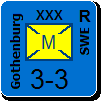

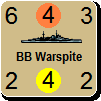
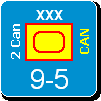
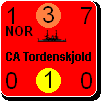
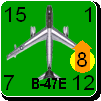
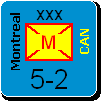

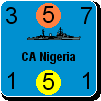




 New Messages
New Messages No New Messages
No New Messages Hot Topic w/ New Messages
Hot Topic w/ New Messages Hot Topic w/o New Messages
Hot Topic w/o New Messages Locked w/ New Messages
Locked w/ New Messages Locked w/o New Messages
Locked w/o New Messages Post New Thread
Post New Thread